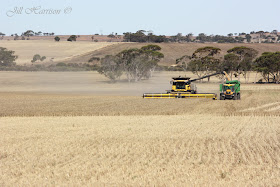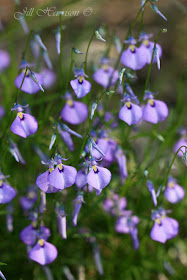Located in the heart of the Western Australian central Wheatbelt, 254 kilometres east of Perth, Bruce Rock is an ideal base from which to explore the Wheatbelt.
The Bruce Rock Caravan Park, which is managed by the Bruce Rock Shire, is conveniently located in Dunstall Street next to the swimming pool and only a short walk from the main street. The Park has 20 powered sites and six backpacker huts, lawn, shade, and full amenities including laundry and campers’ kitchen.
The backpacker huts can accommodate one or two people, but you need to bring your own linen and blankets. There are no cooking facilities in the huts, but you can use the spacious campers’ kitchen which has ample food preparation space, two stoves, microwave and a sink. There is also a barbecue and outdoor eating area.
Bruce Rock was originally known as Nunagin, but
confusion with other towns in the area led to it being renamed Bruce Rock. The
actual Bruce’s Rock is a low granite outcrop located two kilometres to the east
of the town. The rock was named after a
sandalwood cutter, John Rufus Bruce, who set up his camp near a soak at the
base of the rock in the mid 1800’s. Near the picnic site you can see two old stone
wells built in the early 1900’s. A walk over
the rock will give you good views of the surrounding countryside. The last Aboriginal Corroboree in this
district is said to have been held here.
The area
was first used for sheep in 1863, although it wasn’t settled till after
1900. Multiple winner of the Tidy Towns
competition, Bruce Rock’s wide veranda-lined main street retains impressions of
its past, whilst displaying an innovative spirit which is bringing new growth
to the town. Grain is Bruce Rock’s major
industry and in early summer you will see huge headers harvesting the grain.
The image below was taken at my sister and brother-in-law's family farm in Bruce Rock.
The image below was taken at my sister and brother-in-law's family farm in Bruce Rock.
 | |
| Bruce Rock main street |
A few things to do at Bruce Rock
- In November the town hosts the annual Vietnam Veterans Back to the Bush Reunion.
- Agricultural Show in October
- See crops being harvested in November-December
- A 1200 seat amphitheatre hosts evenings of entertainment under the stars
- The Recreation Centre caters for a variety of sports from lawn bowls to football
- Bruce's Rock just out of town is a great place for a picnic. See two old stone wells built in the early 1900s.
- Kokerbin Rock, the third largest monolith in Australia is about 40km north west of Bruce Rock - a great place for bush walking, panoramic views, picnicking, photography, and camping
- Granite rocks are a feature of the wheatbelt, and Totadgin Rock Nature Reserve on the Bruce Rock-Merredin Road is another granite rock where you can go bushwalking.
- Bandee Salt Lakes near Doodlakine
- Smallest bank in Australia at Shackleton
- Merredin - Old Railway Station Museum, Heritage Trail, remains of former field army field hospital, No4 Kalgoorlie Pipe Line pump station.
To contact the Bruce Rock Caravan Park: telephone the Shire offices on 08 9061 1377 Monday to Friday 8.30am to 4.30pm
To read this complete campsite report please see October 2012 edition of On The Road magazine
You might also like - click on the link here - Camp amongst the wildflowers



























